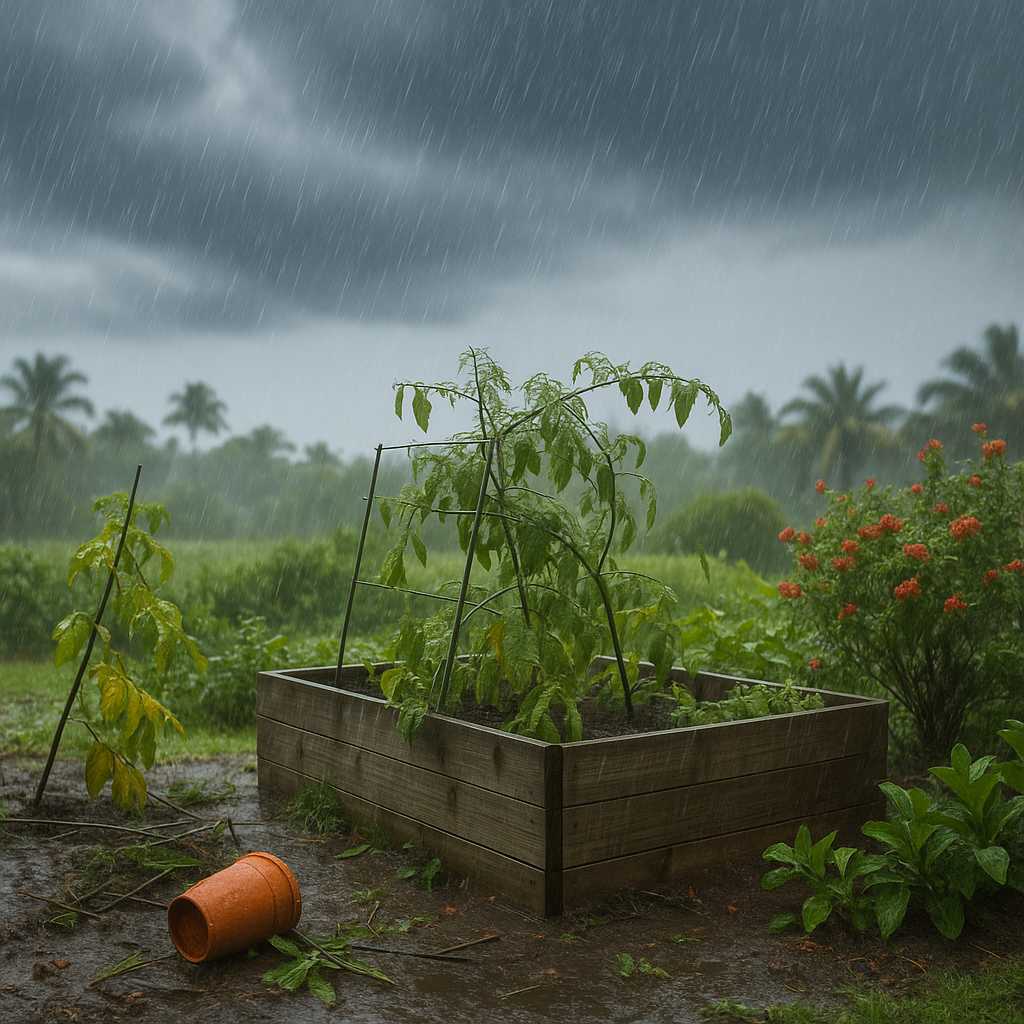Hurricane season in Florida isn’t just a concern for rooftops and windows—it’s a serious threat to your garden, too. High winds, torrential rain, and flooding can turn a thriving garden into a tangle of debris overnight. But with a few smart strategies, you can prepare your plants, protect your structures, and bounce back faster after the storm.
Let’s walk through how to hurricane-proof your Florida garden—step by step.
Choose the Right Plants from the Start
If you’re just beginning your garden or thinking about replanting, now’s the time to select resilient, storm-tough plants.
Native plants like firebush, coontie, and beautyberry are built for Florida’s extremes.
Deep-rooted perennials often survive better than shallow-rooted annuals.
Avoid top-heavy trees or weak-stemmed ornamentals that break easily in high winds.
Secure Your Structures: Trellises, Arches & Raised Beds
Before a storm:
Stake down or temporarily remove trellises and garden arches.
Use hurricane straps or zip ties to brace raised beds with trellis backs.
Remove temporary garden décor, umbrellas, or lightweight fencing.
Pro Tip: Build raised beds with vented sides or bottom weep holes so water drains fast after heavy rain.
What to Do with Pots, Containers & Hanging Baskets
Potted plants are especially vulnerable during hurricanes. Here’s what to do:
Move containers indoors (garage, shed, porch) when possible.
For large pots you can’t move: lay them on their side and wedge between bricks or heavy bags of soil.
Hangers or baskets? Take them down. They’ll become projectiles in high winds.
Prep for Flooding & Drainage Issues
Standing water after a hurricane = root rot, fungal outbreaks, and plant death.
Do this now:
Clear gutters and drains near your garden.
Add mulch dams or straw bales around low areas to slow runoff.
Raise sensitive herbs or veggies in containers off the ground to avoid soaking.
Prune, Trim & Thin Ahead of Time
A week or two before an expected storm:
Remove dead limbs, weak branches, and anything that could become a hazard.
Thin dense foliage to reduce wind resistance.
Skip heavy fertilizing—you don’t want lush, tender new growth right before a storm.
After the Storm: What to Check First
Once it’s safe to go outside:
Inspect structures and clear any debris weighing down plants.
Discard broken stems, fallen fruit, or soaked mulch to avoid mold.
Watch for stress signs in plants: wilting, yellowing, or soft stems.
Consider applying a mild seaweed or fish emulsion fertilizer to help roots recover.
Let’s Weather This Together
Your garden is more than a collection of plants—it’s your refuge. Taking time to hurricane-proof it now means less heartache later and a faster recovery. If you’re not sure how to protect your specific setup, I offer consultations for stormproof garden design right here in Central Florida.
Need help prepping your garden for the season? Book a consult here.

